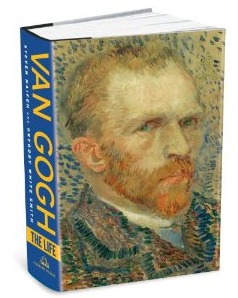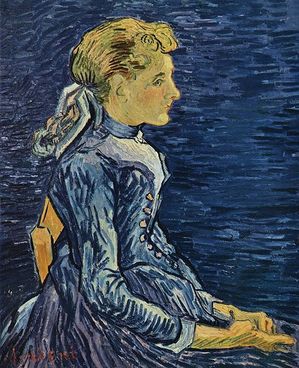Today, a new biography of Vincent van Gogh lands in bookstores (officially), and it is bound to cause discussion and debate — not to mention bring more attention to this beloved painter.
 Van Gogh: A Life, written by Stephen Naifeh and Gregory White Smith, takes apart the story that van Gogh committed suicide, and instead pins his death on a couple of boys van Gogh befriended, sort of, in his loneliness –even though they relentlessly mocked him. It wasn’t intentional — just accidental.
Van Gogh: A Life, written by Stephen Naifeh and Gregory White Smith, takes apart the story that van Gogh committed suicide, and instead pins his death on a couple of boys van Gogh befriended, sort of, in his loneliness –even though they relentlessly mocked him. It wasn’t intentional — just accidental.
Naifeh and Smith, years ago, wrote Jackson Pollock: An American Saga, which was also controversial in the art world, but won the 1991 Pulitzer for biography.
The van Gogh bio weighs in at 976 pages, which I haven’t yet read, but their prodigious research was outlined on Sunday night’s 60 Minutes. Morley Safer was given two segments, instead of the usual one, to talk with the authors about their theory, their methods, their evidence and their remaining questions. They admit that their theory has loose ends, but fewer than the suicide story.
I came away from 60 Minutes thinking they are on to something that, unfortunately, is unlikely to be proven.
 The van Museum, which cooperated with the authors (hat tip to Reuters) gave them access to previously unstudied materials and posted a statement on its website saying, in part:
The van Museum, which cooperated with the authors (hat tip to Reuters) gave them access to previously unstudied materials and posted a statement on its website saying, in part:
The authors studied all the available documents relating to Van Gogh, as well as the relevant literature and archives. They also frequently consulted with Van Gogh specialists around the world. As a leading centre of expertise, the Van Gogh Museum made a major contribution to this project. Furthermore, two of its staff members provided comments on the first draft of the manuscript.
The publication of this biography represents a major contribution to our understanding of Vincent van Gogh’s life and work, with intriguing new perspectives.
Leo Jansen, a curator at the Van Gogh Museum, comments, ‘…There have always been unresolved issues surrounding Van Gogh’s suicide, including such fundamental issues as the place of the incident and why Van Gogh decided to commit suicide just then. What is more, the gun was never found. Naifeh and Smith re-evaluate the known facts and present the hypothesis that two boys were involved in a mysterious incident that led to the fatal shot. This is an intriguing interpretation, but plenty of questions remain unanswered…”
60 Minutes hasn’t always been great in its coverage of art, but I comment not only the substance but the production of these two segments. They are lavishly illustrated by van Gogh’s paintings, including the lovely one above, of Adeline Ravoux, the daughter of the owner of Auberge Ravoux, where he died (it’s in a private collection).
Here are the links to Part One and Part Two. Yes, you have to suffer through commericials, but — for me at least — it was worth it.
